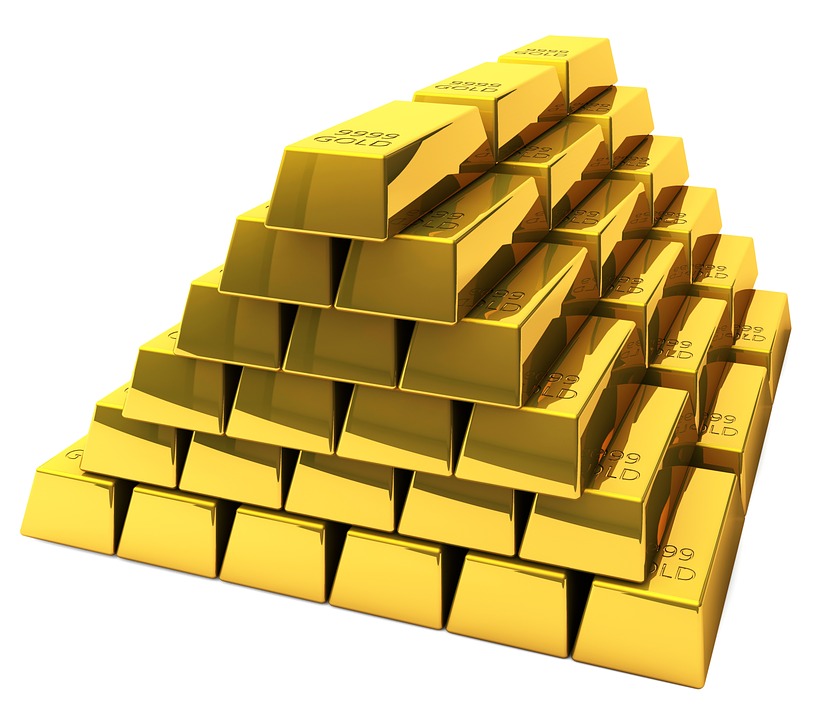Most Forex brokers offer traders the option to trade precious metals in the CFD markets as well, and if you are not taking advantage of this, you are missing out. Precious metals are available as CFDs through Forex brokers, CFD brokers, futures markets, and various options markets. Most people stick to silver and gold, but there are also markets for platinum and palladium globally that can be traded as well. Here are some tips to get you started trading precious metals.
Fundamentals for precious metals are quite often driven by monetary policy. For example, the market should react to interest rates coming out of central banks, as it gives you an idea as where inflation goes, and this of course is the main interest for precious metals traders: inflation. Quite often, gold and silver are both considered to be a hedge to inflation, and large players in the market will push prices both higher and lower depending on inflationary expectations.
For example, gold markets will tend to rise in an inflationary environment. Why is that? The reason is quite simple, because it’s going to take more of that fiat currency to buy gold. The reason I say fiat currency instead a US dollars is that there are gold markets out there denominated in other currencies. However, by a large margin the majority of gold is traded in the greenback.
CFD markets are much cheaper than futures markets, because you can break down your trade into smaller sizes. For example, trading gold in the futures market, the full contract size, has margin requirements around $5000. That’s just to be in the market, and of course you cannot buy a percentage of a contract, it’s either a whole contractor nothing. By contrast, CFD markets allow you to buy as little or as much as you need to maintain proper position size, so for the average retail trader, the CFD market functions quite nicely.
Most analysts and educators speak of precious metals in US dollar terms, but depending on your broker, you may have the ability to trade precious metals in euros, pounds, Australian dollars, Canadian dollars, or even Japanese yen. So the question then is which currency do trade the markets in? It’s actually quite a simple function of momentum at this point.
For example, if the Japanese yen is skyrocketing in value, you know that you don’t want to buy precious metals in that currency. If the US dollar is falling, then it makes sense that you should realize more gains in the gold market versus the greenback than the yen. So as a function of money flow, it makes sense that you buy gold in weak currencies, essentially hedging out inflationary issues, while selling it in stronger currencies. As a general rule, gold markets will move in the same direction, but if you can get a better return by simply switching the quote currency, you can realize stronger gains. At the end of the day, you are not taking physical delivery, so it doesn’t really matter beyond the amount of return that you get.

Precious metals are popular markets, and it’s quite common to hear people suggesting that 5 to 10% of your portfolio should be in gold or silver. This is simply to offset currency issues, and those who are investors will buy gold when it dips and hold onto it for incredibly long amounts of time. They typically hold the physical metal, and don’t worry about the day-to-day transactions. However, if you are a CFD trader, then this mindset won’t apply to you.
If you are a trader, one thing that you should be aware of is that the precious metals markets are extraordinarily technical. For example, gold markets tend to pay attention to $10 increments, while silver market participants tend to pay attention to the $0.50 increments on a chart. Obviously, you can’t place trades based solely upon this, but it is a phenomenon that tends to repeat.
If you are not trading precious metals, you are selling yourself short as precious metals are essentially another form of currency. Unlike the Euro for example, gold doesn’t have a central bank controlling it, at least not one specific central bank. The actions of central banks around the world will of course have their effect, especially considering so many of them hold a massive amounts of precious metals. One of the great things about precious metals trading is that you can take half of the equation of a Forex currency pair out of the mix. If the Japanese yen is strengthening, gold will be falling against it. It’s that simple. Obviously, the opposite is true as well. An added benefit is that you don’t need to worry so much about a second country when it comes to trading. If you take nothing else away from this article, realize that pulling up a XAU/JPY chart is an excellent way to realize relative strength of the Japanese yen, taking out the value of the US dollar or British pound. You can then extrapolate whether the Japanese yen is strong or weak on its own and place your trade accordingly in the Forex world.
Precious metals should also be thought of as a safe haven, as in times of political, social, and military strife, gold seems to be an area that people flock to. This is because gold and silver has kept their value for over 5000 years, so they are by far one of the most stable forms of money that mankind knows.

We hope you found our site useful and we look forward to helping you again soon!